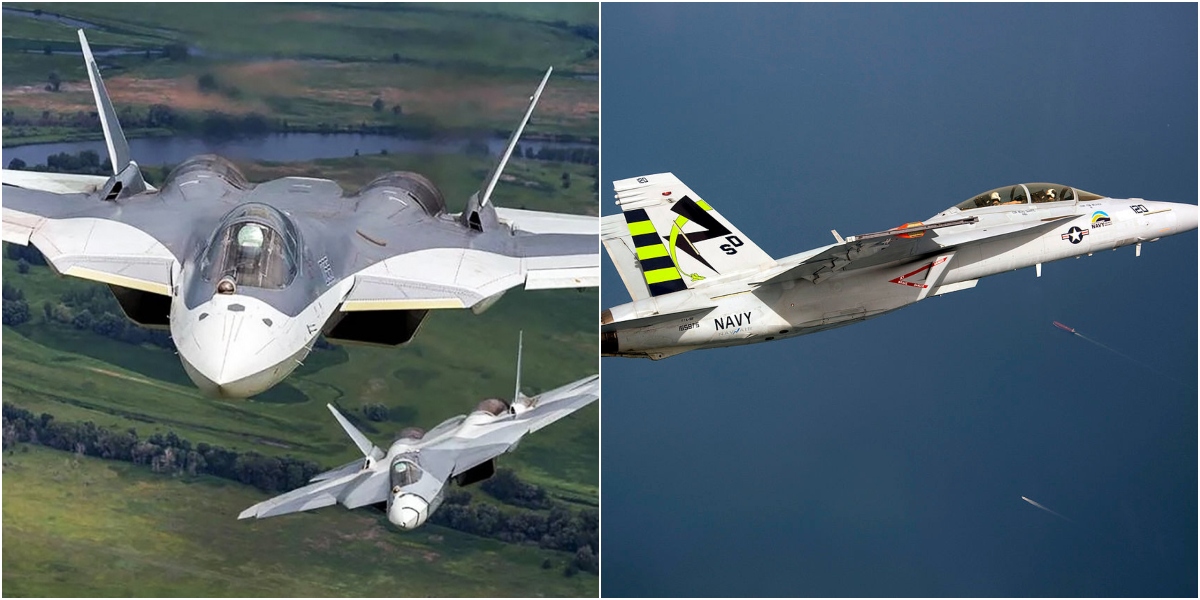Thumpalumpacus
Lieutenant Colonel
That's what happens with inefficient engines.
Follow along with the video below to see how to install our site as a web app on your home screen.
Note: This feature may not be available in some browsers.
Ad: This forum contains affiliate links to products on Amazon and eBay. More information in Terms and rules
Wow, I have not seen a picture of that before. I'm surprised that it wasn't more obvious in Top Gun 2
Wow, I have not seen a picture of that before. I'm surprised that it wasn't more obvious in Top Gun 2...
The first time I fought MiG-29s I picked up tally at about 15+ miles (over a solid overcast). I should have been straining to get tally at 10+/- a bit, and it was due to its smokey engines as well. There is nothing like a long greasy trail saying, "I'm right here"...
I'm sure of it when in mil power (Max Continous Thrust without Afterburner / AB) or below. Honestly, you only know they are in AB during the daytime when they are close (you can either see it or can tell by how he is maneuvering). At that point you aren't looking at exhaust plume so much as to where he is pointing or who he is turning on (attacking). My guess it was in AB as well, maybe just not as bad.Is that from using afterburners, or simply an artifact of the engine itself? I've watched many F4-Es taking off leaving plumes -- presumably military power. Is this a thing throughout their power regimen? And likewise for the MiG-29 pictured? An always thing?
I'm sure of it when in mil power (Max Continous Thrust without Afterburner / AB) or below. Honestly, you only know they are in AB during the daytime when they are close (you can either see it or can tell by how he is maneuvering). At that point you aren't looking at exhaust plume so much as to where he is pointing or who he is turning on (attacking). My guess it was in AB as well, maybe just not as bad.
There was a big push here in the states to get rid of the exhaust plume and the engine manufacturers have stepped up with it basically not being a problem on equipment fielded since Vietnam. I don't think the French or Brit stuff smokes either (have fought Tornados, Mirage F-1s and 2000s).
Historically the Russian made engines have no where near the lifespan of US stuff. The MiG-29s the Germans flew had slightly detuned engines, which were pulled at 300 hours and mildly overhauled. 300 hours later they were tossed. I got this word of mouth from them so have no written sources. The F-15 versions I flew had either F100-100 or -220 (FADEC version) engines, and those have stayed in the plane for up to 2000 hours. Again, this was word of mouth from a crew chief in my ANG unit. The Indians bought late model Flankers (Su-27 type) and have butted heads with the Russians over engines (life span, service, and replacements). Buying Russian equipment is cheaper, much, than Western stuff. The downside is you have to deal with the Russians who are a pain in the are (PITA), parts can be very expensive, and or difficult to get (not much manufacturer support).
You are welcome. While the engines were very short lived, they didn't hiccup. Their fuel controls were hydromechanical (not digital) and would work like a champ up into the 60s. Our -220 would probably work fine up there, but the -100 engine would not (unless left in AB - where you would be afraid to touch the throttles). On the functional check flights the Germans would put on a pressure suit and take it up that high as part of the profile.Thank you much for the detailed reply, bud. As always, I learn something from reading your posts.
You are welcome. While the engines were very short lived, they didn't hiccup. Their fuel controls were hydromechanical (not digital) and would work like a champ up into the 60s. Our -220 would probably work fine up there, but the -100 engine would not (unless left in AB - where you would be afraid to touch the throttles). On the functional check flights the Germans would put on a pressure suit and take it up that high as part of the profile.
On the other hand the plane was VERY reliable in the Germans hands. It almost never broke. They had one hydraulic failure in the three years previous they had been flying them. Fit and finish was rough by US standards, but reliable beyond our stuff. And it was made to takeoff and land on unimproved strips without getting foreign object damage (FOD) in the engines.

I'd have to disagree: we used to refuel USAFE F-4Gs with the same AVTUR as we used for RAF F-4K/Ms and the Spey-engined aircraft didn't smoke while the Wild Weasels chucked it out like they always did.Main reason for smoke trails is poor quality kerosene. Kerosene with a lot of aromatics in it will cause a lot of smoke.
With this in mind, it's to their credit that the Ukrainians are operating their MiG-29s in active combat for over a year. Presumably any Ukrainian MiG-29s in service in Feb 2022 that survive to today have been re-engined. The donated MiG-29s from Poland, Slovakia, etc. would have been thoroughly gone over before they left for Ukraine. Nevertheless, the Ukrainian Air Force mechanics and supply chain folks must be working like heroes to keep their MiG-29s and other types operational.Historically the Russian made engines have no where near the lifespan of US stuff. The MiG-29s the Germans flew had slightly detuned engines, which were pulled at 300 hours and mildly overhauled. 300 hours later they were tossed.